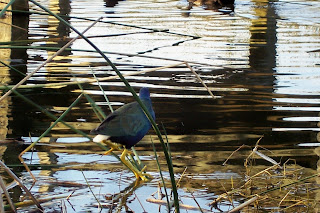I am going to go "out on a limb" here and identify this tree as Eriobotrya japonica , commonly known as the Japanese plum or Japanese medlar.
The Loquat tree is indigenous to South East China and was originally eaten by the Chinese royalty. Over several centuries the size and range of the Loquat trees and fruit has increased. There are approximately eight hundred sub-types in China and Japan and it varies in size and shape all over the world. While it apparently has the ability to self pollinate in a local area, it is typically pollinated by bees
and other insects attracted to it's blooms.
It may grow in subtropical to mild-temperate climates preferring an altitude of 3000 to 7000 feet in it's native China
It has been successfully introduced to Hawaii and the continental United States





































